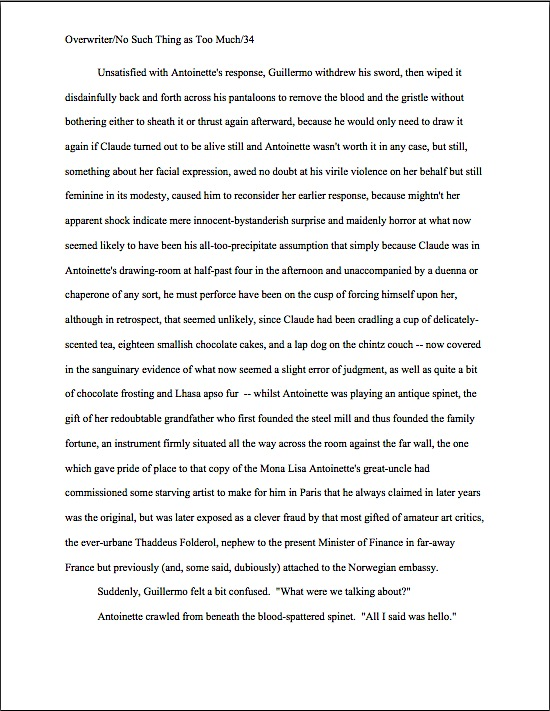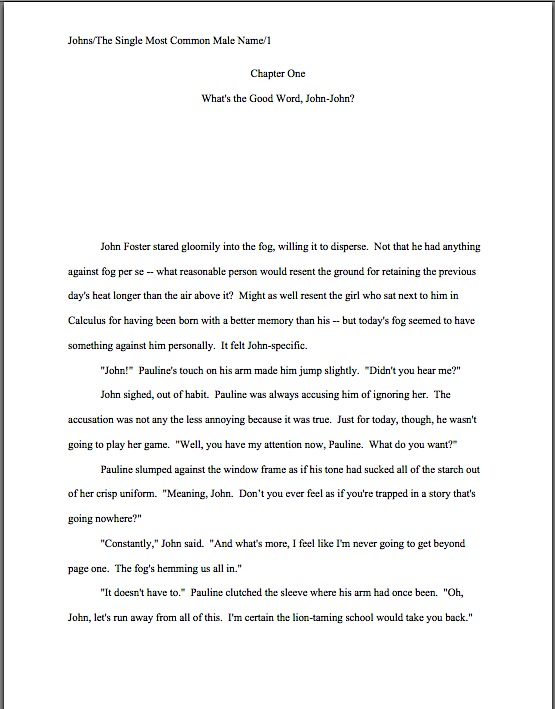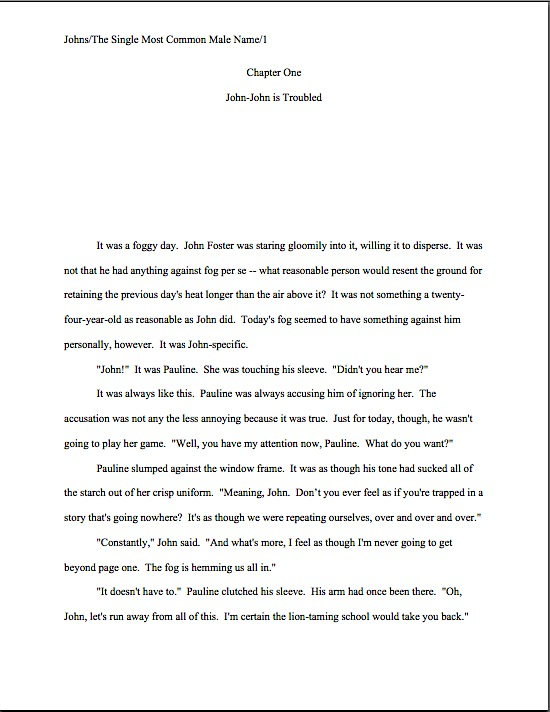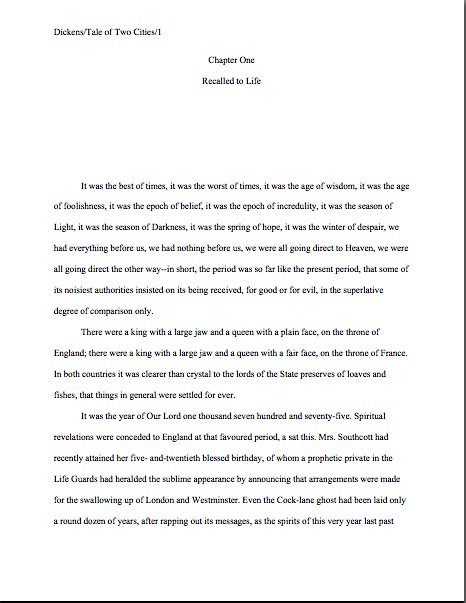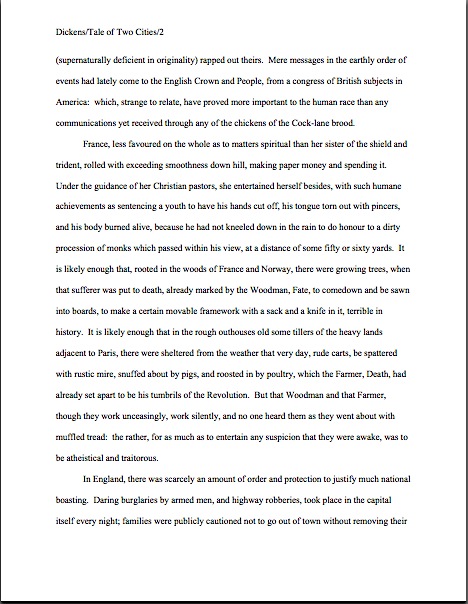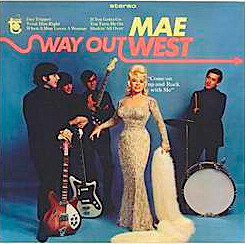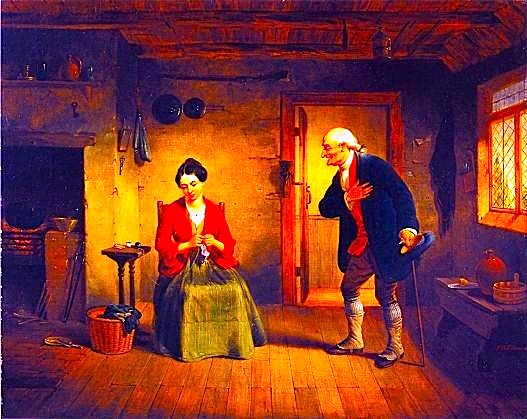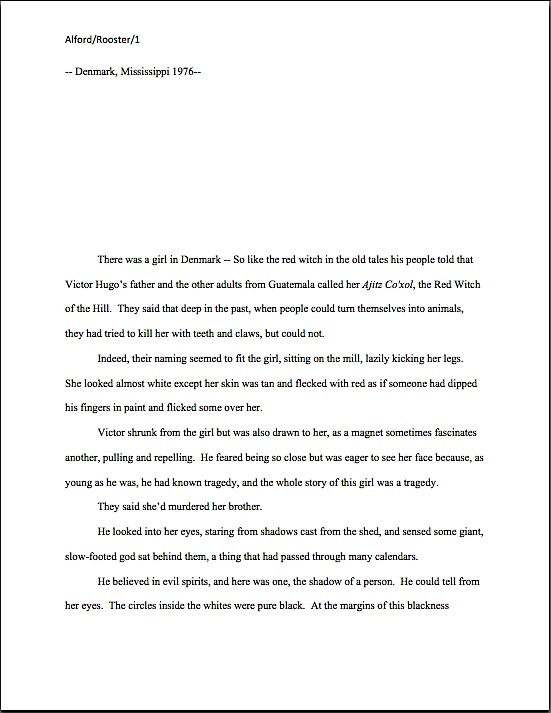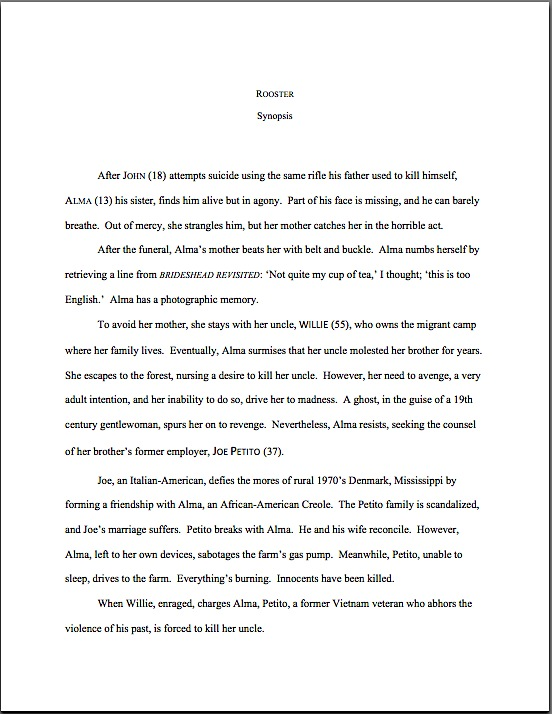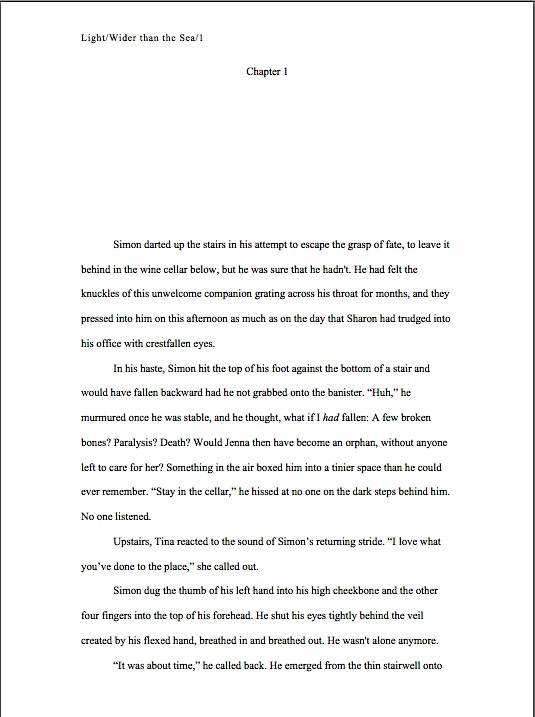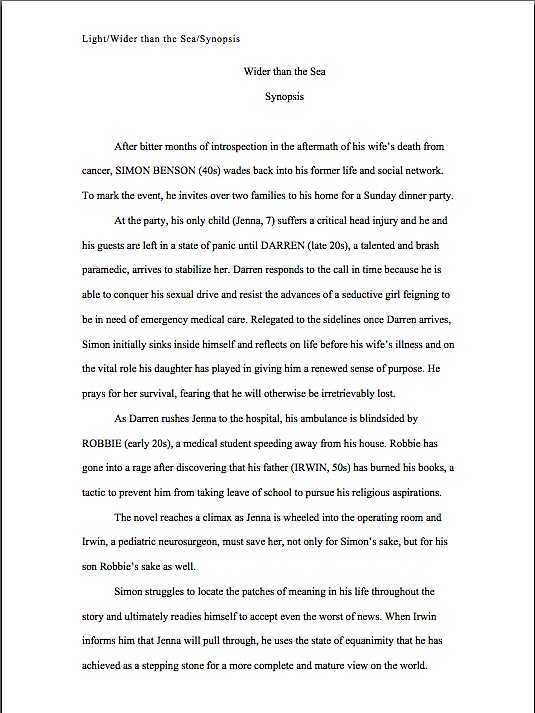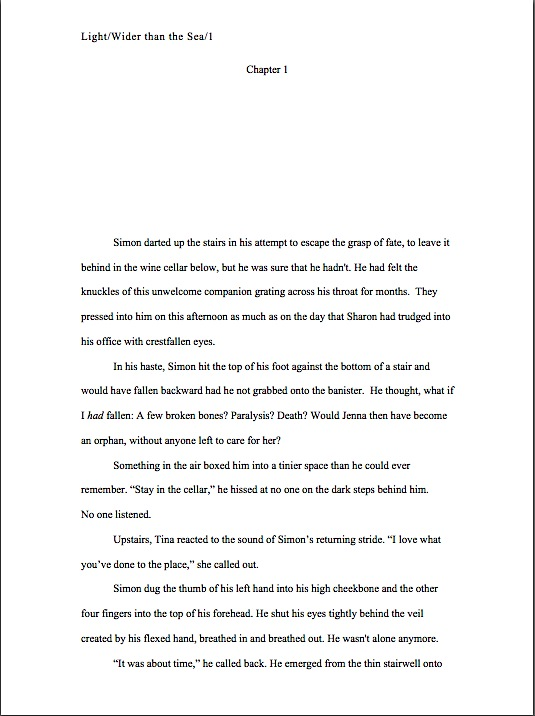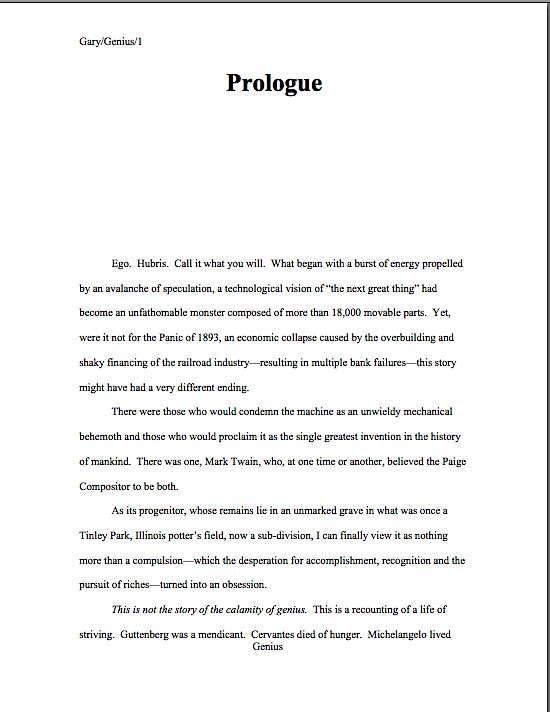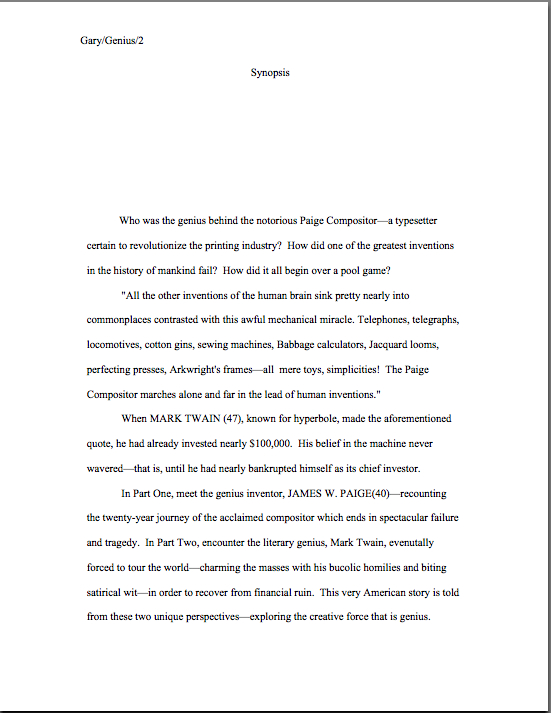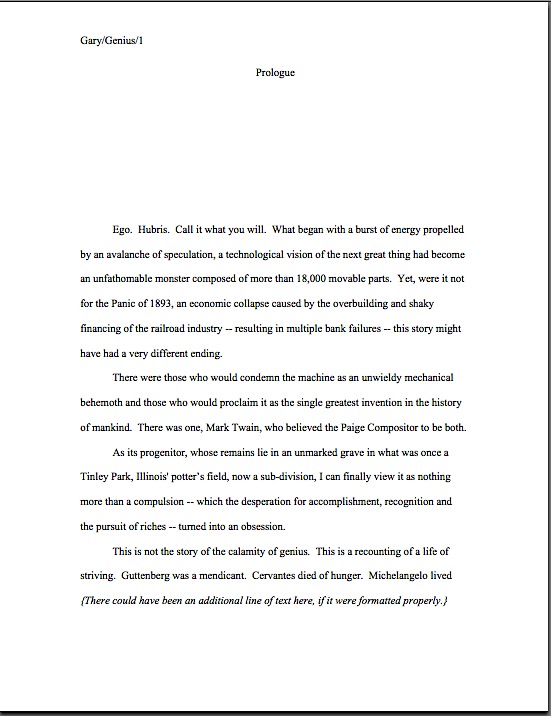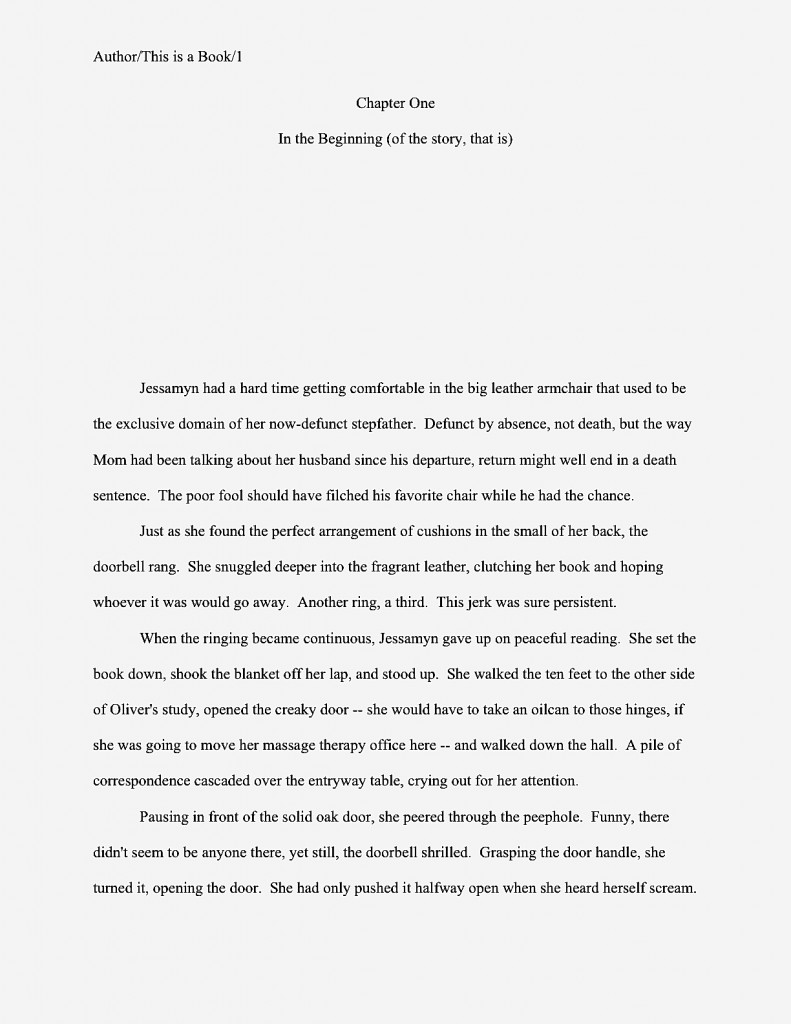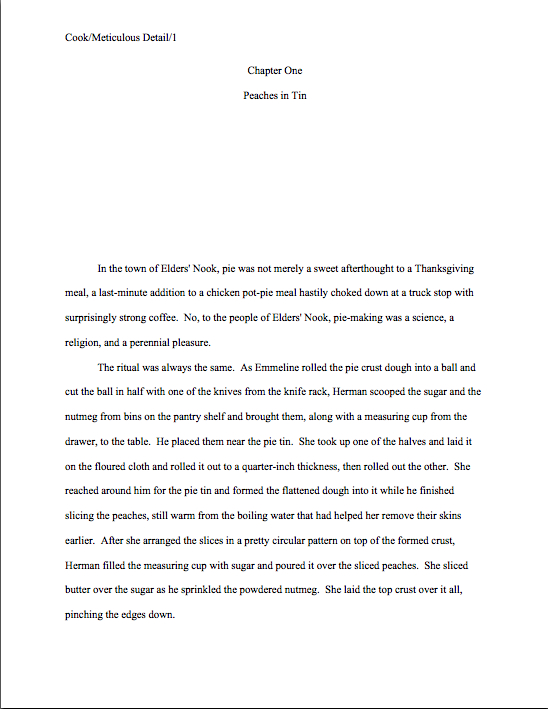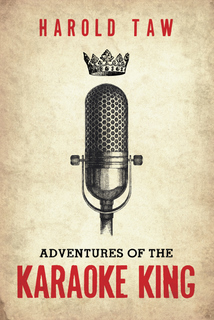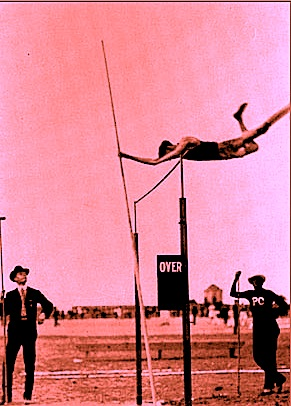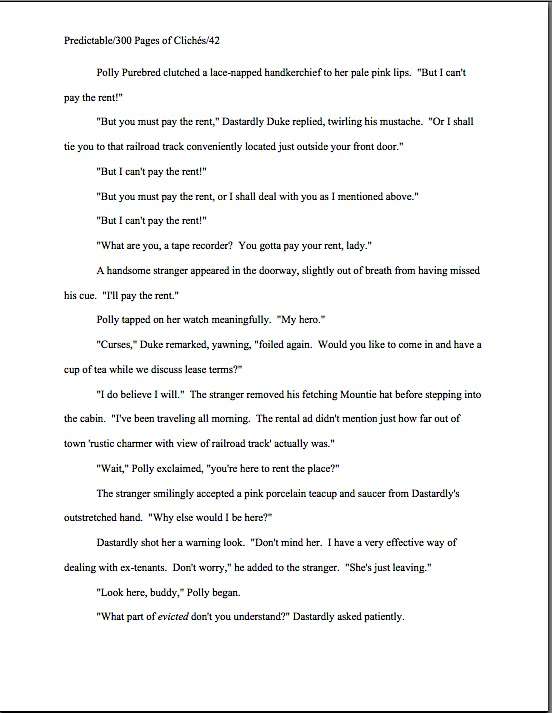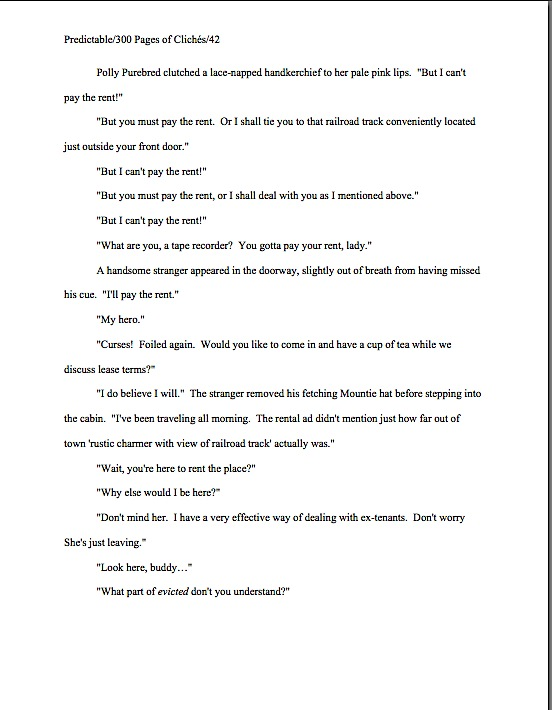Are your fingers stained with highlighter ink, campers? I hope they are: last time, I urged you to scan your submission pages — in particular, the first five, the opening chapter, or all of a contest entry — for over-use of the words and, but, and then; the average manuscript submission is positively peppered with ‘em. Since our old pal, Millicent the agency screener, sees these words so very often, I suggested that you print out these pages and highlight these words throughout, so that you might get a sense of just how often you tend to utilize them.
As I hope you have seen for yourselves, once you started marking, it was pretty darned astonishing just how often those conjunctions leapt off the page, wasn’t it? Or they would have, had you flung yourself into this nit-picky task wholeheartedly — as opposed to, say, devoting yourselves the activities of normal people.
The typical writerly reaction, though, is somewhere in between: glancing over those pages with an initially willing mind, but throwing up one’s hands in despair three buts in. “What was Anne thinking,” I sensed some of you muttering yesterday, “to advise such a time-consuming (and potentially ink-consuming) exercise? Doesn’t she realize that most of us have to fight in order to carve out time to write — and even if I happened to be one of the happy few who don’t, sunny days relatively rare in the Pacific Northwest?”
Well, in the first place, summer in Seattle is frequently beautiful; the popular belief that it rains here non-stop is a myth. In the second place, I do realize just how important your time is to you — which is precisely why I’m advising you to invest a little time now in exchange for not having scads of your time wasted later in the submission process.
Think of it this way: as those of you who have submitted to an agency or entered a contest lately are already well aware, preparing your pages and sending them off is quite time-consuming, and, if you’re like most aspiring writers, even more energy-consuming. We also all know, I hope, that the cleaner your manuscript — that’s industry-speak for pages free of basic spelling, grammar, formatting, and logic problems, in case anyone was wondering — the less likely it is to push Millicent’s rejection buttons. The same holds true for her pet peeves: the better revision job you do, the less likely your pages are to come winging back in your SASE, accompanied by a form-letter rejection. Or, as is increasingly common, for them not to come back at all.
Sense where I’m heading with this? Getting caught in a submission-rejection cycle generally ends up eating far, far more of a writer’s valuable time than an intensive revision aimed at weeding out rejection triggers would take.
Or, to put it more bluntly, aspiring writers who routinely send out first drafts, especially — sacre bleu! — ones that have neither been proofread or spell- and grammar-checked — because they are impatient to get their books published generally have a harder time landing an agent, winning a contest, and/or pleasing an editor than writers patient enough to polish their work prior to submitting it.
Given such a noble goal, concentrating upon something as basic as whether your narrative relies too heavily upon and, but, and then may not seem as if it would make a big difference, but actually, out of all the potential problems a self-editor might discover in a Frankenstein manuscript, overused conjunctions are some of the easiest to catch and fix. And the pay-off can be tremendous: quick-reading agency screeners, editorial assistants (who screen submissions for editors) and contest judges are routinely ordered to subtract points (Brownie in the case of the former two, literal in the case of the contest submission) for grammatical errors — and word repetition is always high on their penalty list.
As is that habitual roommate of conjunctions, the run-on sentence. Not sure what one looks like? Here’s a lulu, presented for your reading pleasure in its natural habitat, the manuscript page.
Laugh if you like, but would it astonish you to learn that this is shorter than some of the sentences my aged eyes have beheld in manuscripts and contest entries? I’ve seen sentences that have dragged on for more than a page; I once spotted one that expected the reader to follow its twists and turns for almost three.
Although I have apparently lived to tell about it, there can be no legitimate justification for dragging the reader through such an epic. The best possible outcome — which the author does not deserve — is that perhaps no one will notice that there was only a single period in those 21 lines of text, but that’s not what’s likely to happen at submission time. Since text like this simply shouts at Millicent, “Hey, this writer didn’t bother to reread this paragraph in hard copy after writing or revising it; clearly, these pages are not ready for professional perusal,” including such a lengthy run-on produces prose that is in effect self-rejecting.
I sense that those of you fond of the occasional multiply compound sentence longing to equivocate. “But Anne,” run-on huggers point out, “couldn’t embracing this sort of conversational-style sentence be a daring authorial choice? Could it not, in fact, be a characteristic of a distinctive voice?”
Well, it could, if it were handled skillfully — but in 99.99% of cases, extended run-ons are not interesting enough to be honored with the name of style. Run-on sentences, much like the repetition of a favorite word or phrase, virtually never strike Millicent as the result of well-thought-out and purposeful writerly strategy. Or, if a pro does think it is purposeful it’s poor strategy: “I know! I’ll bore my reader and annoy Millicent by making her read the sentence twice in order to understand it!”
Seem like a harsh assessment? It isn’t, particularly, if you consider that from an agent or editor’s perspective, it’s the writer’s job to write not only clearly, but beautifully, adhering to the basic rules of grammar. Expressing a sentiment well and without gaffes is, after all, the minimum requirement for professional writing, not an optional extra.
To Millicent, then, a run-on sentence tends to look like an instance of the writer’s just being in too much of a hurry to write well — and in practice, she’s frequently right about that. It’s not at all uncommon for an aspiring writer to whip out a scene or paragraph in a rush, fully intending to come back and flesh out those not-especially-stirring sentences when he has more time. Astonishingly often, though, that mythical day with 27 hours — 24 for normal life, plus an extra 3 for revision — never manages to roll around. The writer forgets all about those original noble intentions and moves on.
Multiply that by a few hundred times, and you’ll end up with the type of submission that makes Millicent shake her head over a good premise gone awry: a typo-filled, run-on laden series of scenes dimly indicating what an intriguing story this might be four or five drafts down the line. A half-century ago, an agent or editor might have taken on a project like this, seeing that with proper professional guidance, the writer might polish it up into something genuinely fine. Today, however, our Millie sees just too many technically perfect submissions to worry much about rejecting those that still need work.
You’d be surprised, I suspect, at just how clearly a page featuring a couple of run-ons telegraphs to the pros that this manuscript could use more revision. Run-ons are usually hodgepodges of several distinct sentences’ worth of material, rubber-cemented together with our old pals and, but, and then. Look how obvious it is that the writer was in a rush:
Eighteen thousand citizens rushed as one to the city’s walls and stared over the side, but they could not possibly have anticipated what they would find there and gasped accordingly, then began to shout.
Essentially, this is a summary, not a description. We can see where and how this hefty hunk of prose could be chopped up into interesting, specific detail-filled individual sentences, but for reasons best known to herself, the writer has elected not to do so.
Once a reader has developed the editorial eye to see what could have been, other types of compound sentence also seem ripe for closer scrutiny. Take, for instance, the 19th century prose practice of stringing clause after clause together with whiches and whos and wheres:
Petunia, who was desperate, ran along the docks where Ambrose had vanished. She turned right every time she came to a curve, which was easier than making a new decision each time, but which left her wondering after about fifteen minutes if the awnings she was passing were the same ones she had passed earlier.
Modern style cries out for fewer of those clunky asides. And don’t even get Millicent started on the species of run-on that’s simply the result of a writer’s apparently being unsure whether it’s okay to replace a period with a comma in order to speed up the reader’s sense of what’s going on.
Sebastian hesitated before marching through the doorway, the scent of gunpowder coming through it was so strong.
The answer, Millie would like me to tell you, is no: it’s never correct to slap two complete sentences together with a comma. That last example should have been cut in half with a period:
Sebastian hesitated before marching through the doorway. The scent of gunpowder coming through it was so strong.
Or a semicolon:
Sebastian hesitated before marching through the doorway; the scent of gunpowder coming through it was so strong.
Even with the punctuation corrected, these sentences still might raise Millicent’s ire. Any guesses why?
Give yourself a gold star with almond clusters if you instantly leapt to your feet, shouting, “So is comparative! It must take a modifier!” A so statement logically requires a that follow-up. Voilà:
Sebastian hesitated before marching through the doorway. The scent of gunpowder coming through it was so strong that it made him gag.
Why, yes, I did add some extra information to this sentence that might not have been part of the author’s original intention; editors are notorious for doing that, in the interests of rendering the prose clearer. I could also have revised these sentences without changing the meaning. What the author probably meant (“And should have taken the time to say,” sniffs Millie) was this:
The scent of gunpowder wafting through the doorway was so strong that Sebastian hesitated before marching through it.
This version also, I am glad to report, neatly side-steps the other professional readers’ pet peeve in the original, presenting cause and effect out of chronological order. Think about it: how likely is it that Sebastian would have hesitated before he smelled the gunpowder? Isn’t it far more plausible that he paused because it wafted toward him and he drew a conclusion from it about what probably lay beyond that doorway?
I hate to be the one to break the sad news, but the writer of the first version probably thought she had said precisely that. She was just in too much of a hurry to go back and make sure a reader would take that meaning from it.
Starting to get the hang of reading a run-on for clarity and grammar? Good. Now — and only now — are we ready to talk about style.
Let’s face it, none of these are particularly pretty sentences. The word choice is not especially interesting; they reveal little about the physical environment, Sebastian’s character, or even the danger into which he is almost certainly walking. As such, the phrasing takes a potentially suspenseful moment and squashes the reader’s sense of anticipation.
So I ask you: as a writer, how likely would you be to do any of those things on purpose, in the name of delightful literature or compelling storytelling?
Millicent doesn’t think it’s likely, either. No professional reader would mistake any of these examples for a daring stylistic experiment; they are not polished or interesting enough to prompt the reader to try to figure out if the writer had some clever reason for presenting these facts in this manner.
Nor — dare I say it? — are these sentences original enough to set off the High Literary Stylings siren in Millicent’s brainpan. That may well come as something of a surprise to creators of the variety of first-person narration whose primary stylistic recommendation is that it reads like everyday speech. The most popular means of pulling that off, as we have discussed earlier in the Pet Peeves on Parade series, is to replace grammatically-necessary periods with the ands, buts, and thens that grant a false consecutiveness to verbal storytelling.
My name is Louisa, and I am seven years old — and already, I see your eyes glazing over, dismissing anything I might have to say as the mere ramblings of a child. But I was there when the schoolhouse caught fire, there when the mayor decamped with the last dime of the town’s funds, there when the crocodiles began to squirm up from the riverbed to dine on the dear departed that no one was around anymore to bury. Then the vultures came, and still, I was there.
It’s not an uncompelling voice — although of the scores of professional readers’ pet peeves, few will cause the average Millicent to mutter, “Next!” faster than the grade-school storytelling expedient of having the narrator say right off the bat My name is X and I am # years old — but honestly, any originality the reader might spot in it comes from the details, not the echo of run-on filled normal speech. (“And even if it did,” Millicent adds, “this is a far cry from a seven-year-old’s voice.”)
Don’t believe me? Okay, here is the same passage, stripped of run-ons and reworked to minimize conjunctions.
My name is Louisa. I am seven years old. Already, I see your eyes glazing over, dismissing anything I might have to say as the mere ramblings of a child, but I was there when the schoolhouse caught fire. I was there when the mayor decamped with the last dime of the town’s funds. I was there when the crocodiles began to squirm up from the riverbed to dine on the dear departed that no one was around anymore to bury. When the vultures came, I was still there.
A forest of hands sprouted throughout the course of that last paragraph; I couldn’t be more delighted. “But Anne,” shout those of you who have been paying attention in recent weeks, “isn’t this opening a prime example of the oh-so-common invocatory rhythm achieved through word and phrase repetition that we have already identified as one of Millie’s pet peeves? I can’t believe that you edited the original without addressing that problem.”
Hey, it’s not the editor’s job to rewrite the author’s voice choices; all we do is flag what’s not working and suggest how to kick-start that story’s engine. It’s the writer’s job to decide how the words should appear on the page, right?
Admit it: you’re happy that’s the case. You wouldn’t really like somebody else to set your literary voice for you, would you?
So I leave to you the meaty creative challenge of making your prose sound like you at your best. For the moment, my goal is far less lofty: I want to help you be able to spot a run-on when you encounter it in the wild.
Here’s a good preliminary rule of thumb: if you can’t say any given sentence within a single breath, it might be a run-on. (Yet another great reason to read your manuscript OUT LOUD, IN HARD COPY, and IN THEIR ENTIRETY before you submit, eh?) Another classic tip-off: where run-ons gather, there will be ands aplenty also, typically.
So whip out your marked pages from last time, please, and let’s observe the reproduction habits of and. If you’re like most writers, your marking project probably revealed four major patterns of andusage:
(1) In lists.
Remember, not all lists take the form of Kamala had three novels, two memoirs, and a dictionary in her backpack. Keep an eye out for lists consisting of named emotions, which often appear in groups (Kamala felt angry, betrayed, and hurt), too-hurried accounts of activity (Kamala went to the store, searched fruitlessly for spumoni ice cream, ran down the block to her favorite trattoria, and begged them to sell her a couple of scoops on the sly.), as well as lists inadvertently formed by the use of and for emphasis (Kamala felt angry and betrayed and hurt and, consequently, ravenous for spumoni ice cream.).
Don’t think of all of those types of sentence as lists? Millicent does, believe me — and are lists really the most interesting way to present your protagonist’s activities? Ever?
(2) In the immensely popular X happened and (then) Y happened sentence structure.
We’re all familiar with this one, right? Edward ate his pizza and drank his Coke. The sky turned brown, and all of the birds stopped singing. I could go on like this all night, and if my guests were not flipping impatiently through magazines, I would.
There’s nothing wrong with this structure per se — but used too often, or too close together, all of those ands can start to feel quite repetitious quite fast. As can…
(3) In the almost-as-popular trilogy structure: Someone did X, Y, and Z. Alternatively, it may appear as Someone did X and Y, then Z.
Yes, either of these structures could be considered a list (as in, Christos cried, rolled over, and bawled some more.), but since most aspiring writers simply like the three-beat rhythm, I prefer to talk about it as a separate sentence type. Again, there’s nothing wrong with this structure if used sparingly, but all too often, the three-beat descriptive sentence becomes the default in the manuscript.
The resulting repetition can feel quite percussive to a reader, even if the actual sentence structure varies:
Christos felt betrayed, confused, and, oddly enough, desperate for some spumoni ice cream. Puzzled, he wandered into his kitchen, yanked open the freezer door, and pondered his ice cream supply. Wait — what had happened to his long-hoarded supply? Suddenly, it came to him: he’d heard Kamala rooting about in here in the wee hours, rattling bowls and clattering spoons. He felt angry and betrayed and hurt.
See how predictable those threesomes became, even in the space of one short paragraph? Imagine how Millicent feels when confronted with pages upon pages of them — which happens more than any of us would like to think.
(4) In complex descriptions.
Descriptions with multiple elements almost always contain at least one and, particularly if the sentence is passive: Germaine was tall and lanky. Again, this is technically a list (albeit a short one), but few writers would think of it as one.
Pay close attention to descriptive passages for another common and bugbear: sentences containing more than one of them. A multiple-and sentence is to most professional readers what a red flag is to a bull, and yet they are so easy to produce almost inadvertently if a writer is trying to cram too much description into a single sentence. As in:
Germaine was tall and lanky, with long, straight hair that came down to her lean and boyish hips. She liked to dress in black-and-white dresses, the kind that confused the eye if she walked past a strobe light, and skin-tight leather boots. She also favored tight jeans and tank tops, except of course for days she knew she would be running into Kamala and joining her on a spumoni ice cream run.
Quite a lot of ands, isn’t it? As strange as it may seem, most writers have an infinitely easier time spotting this kind of repetition in other people’s work; in their own, they tend to concentrate on the description, not the repetitive structure.
Complicating matters is the fact that often, two or more of these four types of and usage will appear within a single paragraph — or even a single sentence. Not sure what that might look like in practice? Okay, see if you can ferret out instances of all four kinds in this sterling piece of prose:
Abe took a deep breath and ran his palms over his face. He yanked his handkerchief from his pocket and mopped the red and black tattoo over his left eyebrow, folded it twice, and stuffed it back into his coat. A motley assortment of trash caused his hand to recoil: cast-off candy bar wrappers, half-sucked lollipops hastily stuck back into their wrappers, waiting for later, and both red and black licorice whips. Sure, he was a sane and sober adult now. Outwardly composed, he twisted his face into a smile, swallowed a groan, and extended his hand to Emile.
How did you do? Admittedly, we’re looking for something a bit subtle here. Although the types of repetition used in this example may sound merely chatty when read out loud, they would come across as structurally redundant on the page. Even minor word repetition can set editorial teeth on edge, because editors — like other professional readers — are trained to zero in on redundancy.
To see how this orientation might affect how one reads, let’s look at this same paragraph with a screener’s heightened antennae:
Abe took a deep breath and ran his palms over his face. He yanked his handkerchief from his pocket and mopped the red and black tattoo over his left eyebrow, folded it twice, and stuffed it back into his coat. A motley assortment of trash caused his hand to recoil: cast-off candy bar wrappers, half-sucked lollipops hastily stuck back into their wrappers, waiting for later, and both red and black licorice whips. Sure, he was a sane and sober adult now. Outwardly composed, he twisted his face into a smile, swallowed a groan, and extended his hand to Emile.
See? The repetition of all those ands can be downright hypnotic — the percussive repetition lulls the reader, even if the action being described on either end of the and is very exciting indeed.
There’s a reason for that, you know, and if you’ve been paying attention throughout this series, it has probably already occurred to you. The swiftly-scanning eye’s automatic tendency is to jump between repeated words on a page, in very much the manner that a CLUE player might move his piece from the study to the kitchen via the secret passage about which everyone in the game is evidently quite well-informed. (Hey, it’s an editor’s job to demand precise word usage.)
The result: Miss Scarlet did it in the kitchen with the revolver.
Oops, wrong chain of events: the result relevant for our purposes is a submission page read far, far more quickly than the average submitter might wish. Not only by Millicent and her ilk, but by the average reader as well.
The best way to avoid triggering this skimming reaction is to vary your sentence structure. A great place to start: scanning your manuscript for any sentence in which the word and appears more than once. Take a gander:
Ezekiel put on his cocked hat, his coat of many colors, and his pink and black checked pantaloons. And he dusted himself out before heading toward the big top, clown shoes a-flopping.
Did your eye catch the subtle problem here? No? Let’s take a second look, this time as Millicent would see it:
Ezekiel put on his cocked hat, his coat of many colors, and his pink and black checked pantaloons. And he dusted himself out before heading toward the big top, clown shoes a-flopping.
All of the ands are serving slightly different functions here, two of which would be perfectly valid if they stood alone: the first is connecting the second and third items in a list; the second is connecting two characteristics in a shorter list. And the third — as in this sentence — is the kind of usage we discussed last time, where a conjunction gives a false sense of chatty consecutiveness between the first sentence and the second.
When I first began writing that last paragraph, I didn’t intend it to be an illustration of just how visually confusing word repetition may be on the page — but as I seemed to be succeeding brilliantly at doing just that, I figured I’d just run with it.
You’re welcome. Let’s highlight the repetition here, to determine precisely why a skimming reader might find it confusing:
All of the ands are serving slightly different functions here, two of which would be perfectly legitimate if they stood alone: the first is connecting the second and third items in a list; the second is connecting two characteristics in a shorter list. And the third — as in this sentence — is the kind of usage we discussed yesterday, where a conjunction gives a false sense of chatty consecutiveness between the first sentence and the second.
Is your brain in a twist after all of that percussive redundancy? Never fear — the twin revising morals are actually quite simple to remember:
(1) Every writer, no matter how experienced, will occasionally write a poorly-constructed sentence or paragraph, so there will never be a point where any of us can legitimately assume that our first drafts require no revision whatsoever, and
(2) Just because a given word may carry more than one meaning — or, as here, refer to distinct categories of things — that fact doesn’t nullify the effects of repetition upon the reader.
Because we writers tend to think of words according to their respective functions within any given sentence, rather than as images on a page, these kinds of repetition often flies under our self-editing radars. Unless one is looking for it specifically, it’s easy to, well, overlook. Thus my urging you to whip out the highlighting pens, in case you were wondering. I’m just trying to make repetition jump out at you as garishly as it does to those of us who read for a living.
Incidentally, words that sound alike but are spelled differently — there, they’re, and their, for instance — often strike readers as repetitious if they are used in too close proximity to one another. For example:
“They’re going to look for their zithers in there,” Thierry pointed out.
Why might this sentence give a reader pause? Because many pronounce words silently in their heads while they scan. Yet another great incentive to read your manuscript IN ITS ENTIRETY, IN HARD COPY, and OUT LOUD, eh? It’s the best way to replicate the silent reader’s mental experience.
Next time, I shall delve into some other problems that commonly arise from an over-reliance upon ands. In the meantime, in between time, try to minimize word and sentence structure repetition, and keep up the good work!

